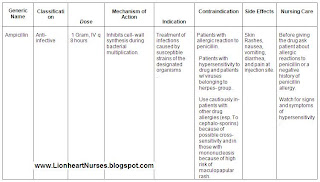The Lowdown on High Blood Pressure
Just a few years ago, if your blood pressure was below 140/90, your doctor would have congratulated you. Now if it's between 120/80 and 139/89, you're labeled prehypertensive and soberly informed that you're more than 3 times as likely to have a heart attack. Indeed, when the National Institutes of Health established this new diagnostic category, about 50 million Americans awoke with a disease they didn't have the night before.
Like prediabetes and borderline-high cholesterol, prehypertension is one of several "predisease" conditions doctors are identifying. Some people think this trend is another example of insurance and drug companies trying to create more "sick" customers. After all, they argue, aren't we "pre" everything? Although I can't dispute that point, I can help you sort out what this BP category means to you.
First of all, prehypertension alone doesn't necessarily raise a red flag for me. If you're my patient, I'm going to consider your blood pressure within the context of your overall risk profile. If you have a family history of heart disease, stroke, and/or diabetes, then I'll take prehypertension very seriously. But if everybody in your family lived into their 90s and your lifestyle is sound, I'll worry much less. I never evaluate the condition just by itself.
That said, prehypertension, even in the absence of other risk factors, can be an effective wake-up call. People who develop prehypertension, especially before age 35, often go on to develop its dangerous big brother, so taking simple steps now could prevent bigger problems down the road.
12 Ways to lower blood pressure naturally.
If you haven't had your pressure checked recently, make an appointment with your doctor. If it's in the prehypertensive range, ask him to evaluate it in light of your other risk factors. Besides exercising more, not smoking, and moderating alcohol consumption, here are five key ways to control it:
1. Limit salt to 1,000 mg daily.
According to Harvard Medical School authorities, 75% of the sodium in our diet comes from prepared foods such as soups, cereals, cheese, and deli meats. Be wary of these.
2. Get 4.7 g of potassium daily.
Only 10% of men and 1% of women get adequate amounts of this mineral, which helps kidneys excrete sodium. Eat more tomatoes, oranges, baked potatoes (with skin), and bananas.
3. Get 1,200 mg of calcium daily.
This mineral also keeps blood pressure low. Low- or nonfat yogurt and milk, salmon, and broccoli are good sources.
4. Eat more whole grains.
In two studies (more than 60,000 participants tracked for 10 to 18 years), people who ate whole grain foods instead of refined carbohydrates significantly lowered their hypertension risk.
Try our heart-healthy food finder tool.
5. Consume no more than 6 teaspoons (100 calories) of sugar daily.
New research is finding that added sugars can raise blood pressure and triglycerides, in addition to obesity risk. Most people get triple that amount, and the major culprit is soft drinks (8 teaspoons in a 12-ounce soda).
Feel more in control? Great — you've lowered your blood pressure already.
GOOD NEWS FOR YOUR HEART
Read Agatston's blog for the latest advice and ask him questions at prevention.com/dragatston.
Arthur Agatston, MD, an associate professor of medicine at the University of Miami Miller School of Medicine, is the author of The South Beach Diet Supercharged: Faster Weight Loss and Better Health for Life. He maintains a cardiology practice and research foundation in Miami Beach, FL.
NOTE: Make sure to track blood pressure over time. Certain medications, including common OTC cold remedies, can temporarily elevate your readings.
Share


























